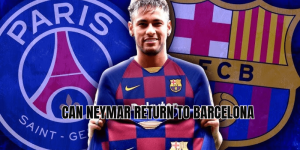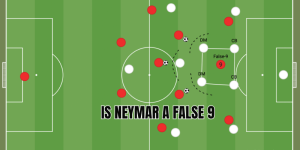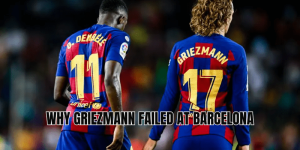From the moment Kylian Mbappé bursts through defensive lines, fans and pundits alike often stop and ask: how Mbappé run so fast? His speed isn’t just for show — it’s a weapon, a signature. In this article, KorKick takes you deep into the science, training, biomechanics, and match moments that explain why Mbappé’s legs seem fused to the wind.
The raw numbers: how fast can Mbappé actually run?
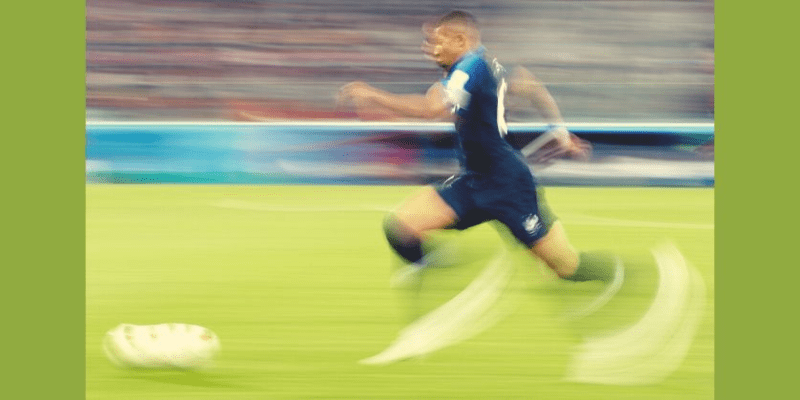
Before we dig into how — we have to look at the what. How fast has Mbappé been recorded moving?
- His official top speed in a Ligue 1 match was measured at 38 km/h (23.6 mph) — a number that cements him among the fastest footballers ever.
- In many other sources, more conservative values — like 36 km/h — are often quoted as his more routine bursts in top-level play.
- According to data from the 2023–24 Champions League, he was tracked at 36.1 km/h in one sprint.
- Some reports suggest that upon entering Real Madrid, metrics showed 37.9 km/h as his max — though these may be peak bursts aided by ideal circumstances.
The differences in these numbers arise. What’s clear: Mbappé’s top speed is elite, and in game settings, he maintains extremely high velocity relative to peers.
Biomechanics and anatomy: what makes his engine tick
Achieving such speed isn’t luck. There’s an intricate interplay of body structure, muscle types, and movement mechanics behind how Mbappé run so fast.
Muscle fiber composition & power
The foundation: fast-twitch (type II) muscle fibers. These fibers contract quickly and generate high force — ideal for sprinting. Elite sprinters often harbor a high proportion of fast-twitch fibers, giving them edge over the average athlete. Mbappé’s explosive bursts hint at a favorable muscle fiber profile.
Hip extension & stride mechanics
One key to Mbappé’s speed is how effectively he extends the hip joint. Strong hip extension helps drive force backward against the ground, pushing him forward. His stride is efficient: long but controlled, with minimal wasted motion. His body alignment tends to stay compact during high-speed runs, reducing drag.
Leg stiffness, tendon elasticity & ground contact
Speed demands quick, forceful, and brief ground contact. Mbappé benefits from stiff tendons and strong lower-leg musculature, allowing him to rebound off the ground quickly. Minimizing “braking” forces during stride transitions helps him maintain velocity.
Deceleration to acceleration trickery
Mbappé is famous for deceiving defenders: slowing the play, baiting a reaction, then exploding. This “decelerate-to-accelerate” method leverages his ability to reaccelerate faster than most defenders can respond. In tactical maneuvers, he will draw them forward slightly, then fire past them.
Training, preparation & conditioning — building the speed
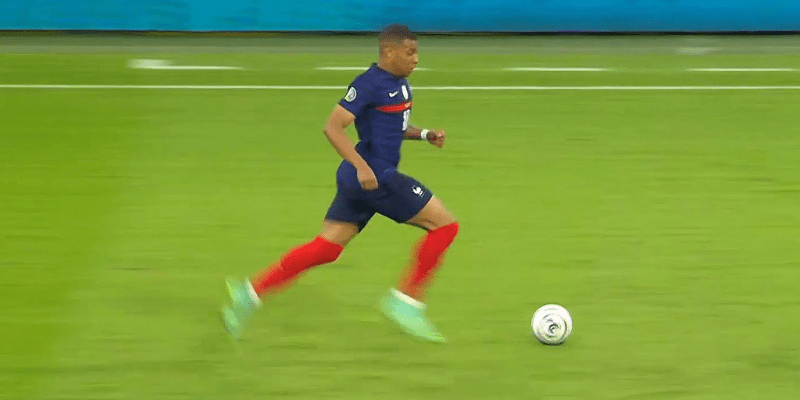
Even with great biomechanics, speed must be refined. Mbappé work relentlessly in the gym, on the track, and with coaches. Below are the pillars supporting how Mbappé run so fast.
Strength & power training
- Plyometrics: Jump squats, bounding, depth jumps — these teach muscles to contract explosively.
- Resistance work: Sled pushes, resisted sprint drills, and weighted sprint training help build force output.
- Squats, deadlifts, Olympic lifts: Essential to build the core, glutes, and leg strength necessary for powerful strides.
Speed technique & sprint drills
- Acceleration drills: Short bursts (5–20 m) focusing on maximal drive phase are staples.
- Overspeed training: Controlled environments, slight downhill sprints or assisted runs may sharpen neuromuscular firing.
- Arm action & posture: Coaches refine arm swing, torso angle, and leg turnover to minimize inefficiency.
Flexibility, mobility & recovery
Tight muscles = constrained motion. Mbappé’s regimen includes flexibility work, mobility drills, foam rolling, and dynamic stretching to preserve fluid mechanics.
Repeated sprint ability & conditioning
Matches demand repeated sprints, not a single dash. His conditioning ensures he can hit near top-velocity multiple times, late into games, without breakdown.
In-match contexts: how speed translates on real fields
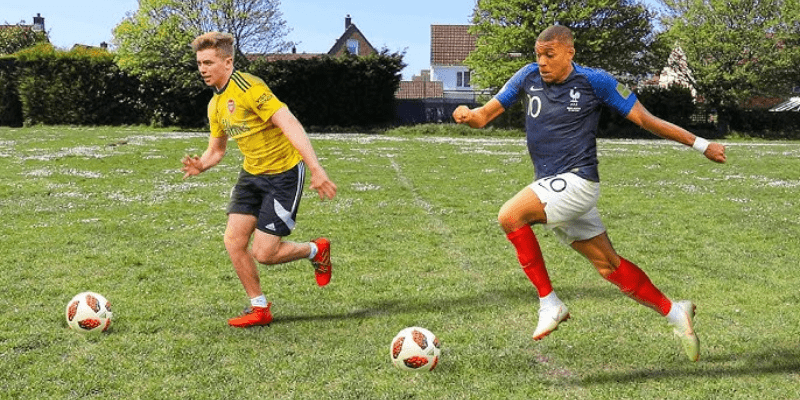
It’s one thing to run fast on a track. It’s another to do it in a 90-minute match, with opposition, tactics, and fatigue.
Timing of runs & intelligence
Mbappé’s understanding of space, anticipation, and timing is key. He doesn’t just sprint blindly — he picks his moments, often initiating runs when defenders are off-balance or unprepared.
Ball control at high speed
Running fast is one thing, controlling the ball while doing it is harder. Mbappé’s close touch and dribbling stability allow him to remain balanced at speed, resisting the urge to slow to control.
Counterattacks & transitional play
His speed is most potent in counterattacks. He thrives when defenses are stretched, space opens, and he can ride the momentum of transitions. His preferred style is not a race.
Using deceleration & feints
He’ll often slow to bait defenders, create hesitation, then reaccelerate. This “change of pace” sneaks him space. Defenders who chase too early lose balance, opening gaps that Mbappé then exploits.
Comparisons & limitations: where speed isn’t everything
Understanding how Mbappé run so fast also means recognizing where it doesn’t guarantee success.
Sprinters vs footballers
Pure track sprinters focus on maximal linear speed under ideal conditions. Footballers must accelerate, decelerate, change direction, and carry a ball while reacting. Mbappé’s speed is specialized for game demands, not 100m record pursuit.
Stamina, injury risk & fatigue
No matter how fast, speed degrades under fatigue. Injuries can also arise if an athlete overextends in pursuit of speed. Mbappé’s durability, joint care, and periodization matter.
Tactics and opponent adaptation
Teams try to neutralize his runs: tighter marking, defensive lines stepping up, high pressing. Mbappé must adapt — perhaps using short combinations rather than long sprints if blocked.
Physical saturation and ceilings
Even elite athletes face natural ceilings. Genetic limits, aging, injuries, and physical wear mean that maintaining top speed over years is a steep challenge.
Iconic matches & moments that display his speed
To see how Mbappé run so fast in action, look at these moments:
- In Ligue 1, he sliced behind Monaco defenders and touched that 38 km/h mark — defenders couldn’t reach him.
- In the Champions League 2023–24 season, his 36.1 km/h sprint came in a decisive counterattack, splitting defenses.
- Matches where he baited defenders, slowed, then exploded into space are classic — watching replay, you feel the hesitation and the burst.
These moments crystallize the blend: biomechanics + training + decision-making.
Final Thoughts
How Mbappé run so fast is not a mystery — it’s the result of natural gifts refined by training, technique, and tactical intelligence. His speed is more than a number; it’s a strategic tool he wields with surgical precision.
At KorKick, we believe every insight into football greatness helps fans deepen their love for the game. If you enjoyed this breakdown of Mbappé’s speed, check out our guides on how Ronaldo’s sprint differs or top speed in football history. Share the article, leave your thoughts — and come back whenever you want to explore the beautiful game deeper.

